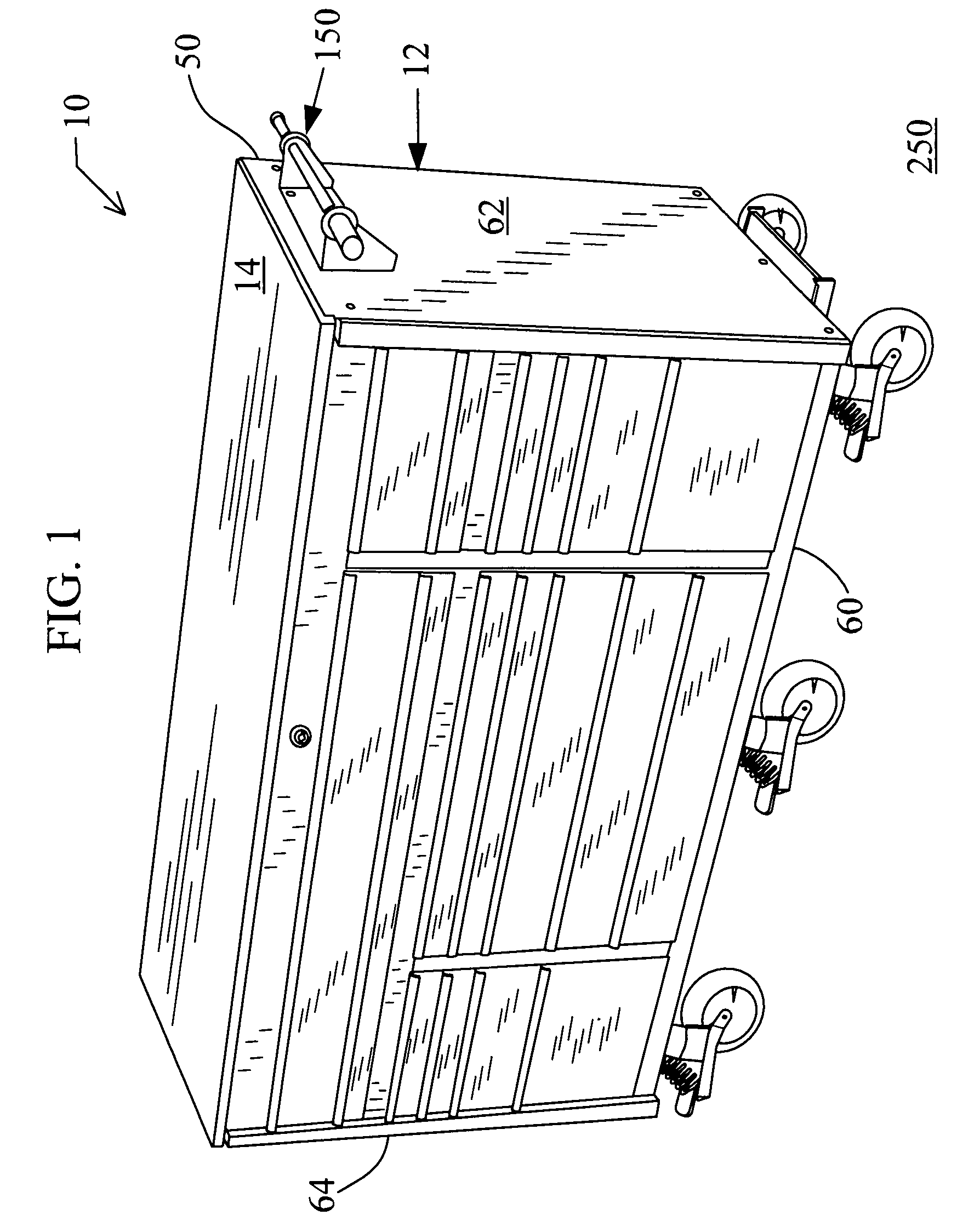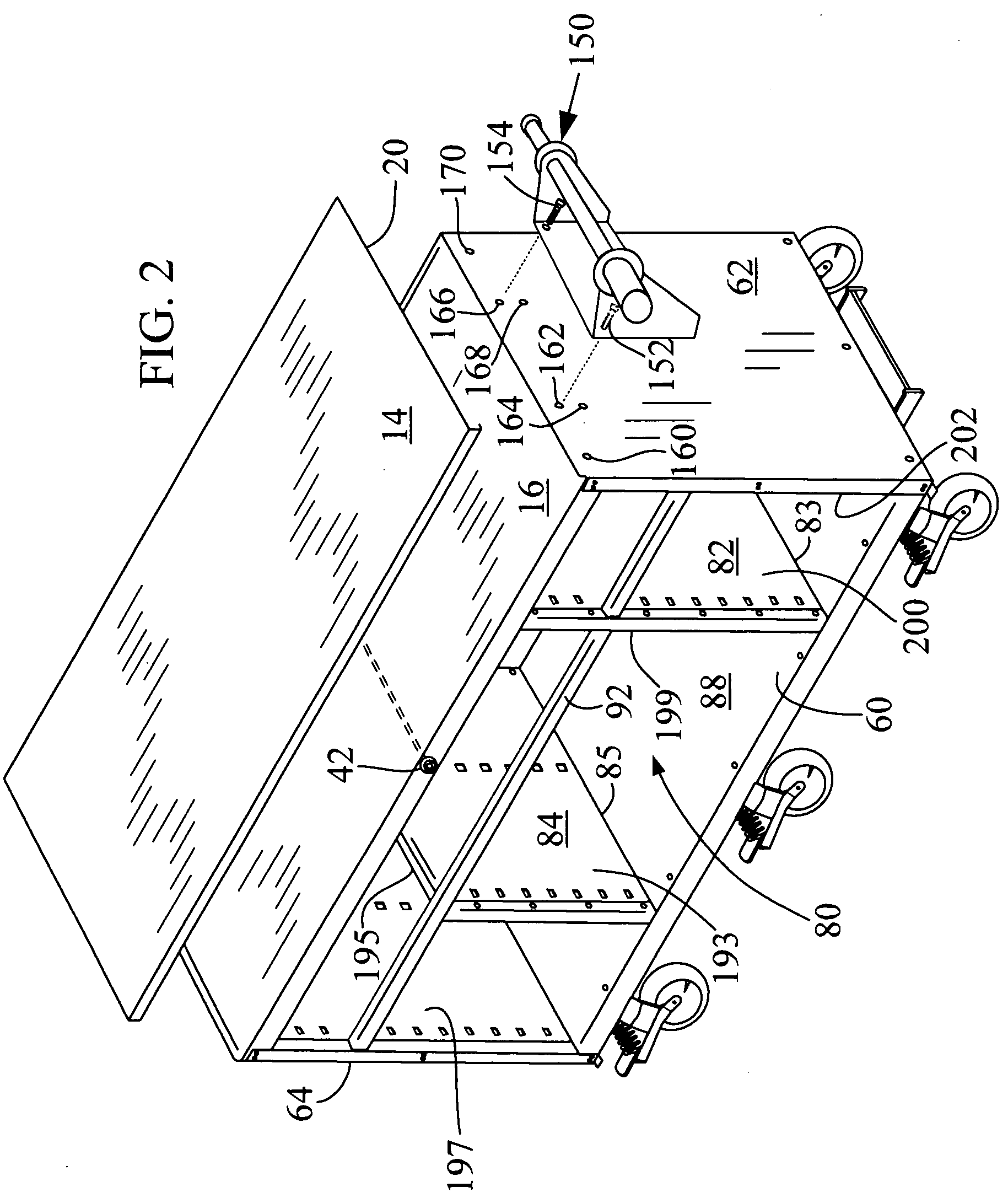Toolbox assembly
a toolbox and assembly technology, applied in the direction of rotating cabinets, mechanical controls, manufacturing tools, etc., can solve the problems of many of these toolbox assemblies that are not very sturdy, not aesthetically pleasing, and many of these toolbox assemblies are even broken, and are difficult to lock or unlock
- Summary
- Abstract
- Description
- Claims
- Application Information
AI Technical Summary
Benefits of technology
Problems solved by technology
Method used
Image
Examples
Embodiment Construction
[0037]Referring now to FIGS. 1, 2, and 16, there is shown a toolbox assembly 10 which is made in accordance with the teachings of the preferred embodiment of the various inventions. Particularly, the toolbox assembly 10 includes a generally hollow body 12 which is selectively formed by a plurality of members which will be discussed below and which is adapted, as is evident from the discussion below, to selectively and movably receive drawers which are themselves adapted to selectively receive and store tools and / or other items and which allows these received tools and / or other items to be efficiently accessed and then later deposited into the toolbox assembly for secure storage. Thus, it should be appreciated that while we are referring to the assembly 10 as a “toolbox” assembly, many dissimilar items, other than tools, may be selectively deposited, stored, and retrieved from the assembly 10.
[0038]The toolbox assembly 12 includes a stainless steel top member 14 and a top member supp...
PUM
 Login to View More
Login to View More Abstract
Description
Claims
Application Information
 Login to View More
Login to View More - R&D
- Intellectual Property
- Life Sciences
- Materials
- Tech Scout
- Unparalleled Data Quality
- Higher Quality Content
- 60% Fewer Hallucinations
Browse by: Latest US Patents, China's latest patents, Technical Efficacy Thesaurus, Application Domain, Technology Topic, Popular Technical Reports.
© 2025 PatSnap. All rights reserved.Legal|Privacy policy|Modern Slavery Act Transparency Statement|Sitemap|About US| Contact US: help@patsnap.com



